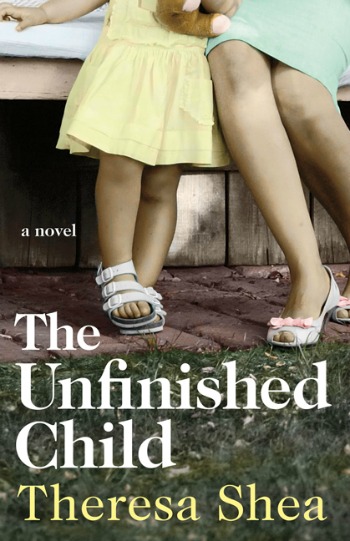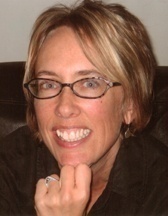 Last semester during my creative nonfiction class, my professor invited the publisher of Brindle & Glass to speak to us. It was fascinating to hear from an industry insider and to learn more about publishing in BC. At the end of her talk, the publisher passed around a few of her recently released books for us to look at and mentioned that they were up for grabs if any of us were book reviewers. I immediately picked The Unfinished Child, which had caught my eye not only for its cover and title, but the back cover copy: the book was about Down syndrome.
Last semester during my creative nonfiction class, my professor invited the publisher of Brindle & Glass to speak to us. It was fascinating to hear from an industry insider and to learn more about publishing in BC. At the end of her talk, the publisher passed around a few of her recently released books for us to look at and mentioned that they were up for grabs if any of us were book reviewers. I immediately picked The Unfinished Child, which had caught my eye not only for its cover and title, but the back cover copy: the book was about Down syndrome.
The novel begins in 1947, when Margaret gives birth to her first daughter and discovers the baby has Down Syndrome. The doctor recommends that the baby be placed in a home for such children, and Margaret and her husband do so (despite me silently yelling at them not to). In that era, children with Down syndrome were called “unfinished” and “mongoloid,” though doctors knew little about the condition. Margaret goes on to have two more healthy children, but feels compelled to visit her oldest daughter occasionally—and does little else for her, despite the appalling conditions she finds at the institution.
Intertwined with Margaret’s story is Marie’s story in 2002. Marie already has her two healthy children, girls ages 10 and 12, when she finds out she’s pregnant again. This is another sore spot in her friendship with Elizabeth, who has been unable to have children despite multiple attempts at IVF. As Marie struggles with her fears about the baby, Elizabeth hits a crisis in her marriage and moves out in an attempt to discover who she is without the baby she so desperately wants. Both women gravitate toward each other and yet push each other away, struggling with their own issues and how that affects their friendship.
Theresa Shea delves deep into themes of motherhood and friendship. I found myself wanting more, reading eagerly to find out what the women did with the issues facing them. Elizabeth and Marie discuss genetic testing, in vitro fertilization, adoption, abortion and more as they navigate their complicated friendship. As someone familiar with Edmonton, Alberta, I also enjoyed the descriptions of the city and its surroundings and even appreciated the descriptions of a bleak, cold winter.
Shea took us deep into the point of view of each of her characters, making me feel as if I understood them and their fears. Her writing was also deeply poetic. I loved passages such as this:
Barry took her in his arms. He ran his hand along her back, using his fingertips to slowly trace the outline of each vertebra along her spine. He started at the curve of her neck and followed each ridge and hollow down to her waist as if she were his rosary and he was saying his prayers.
The Unfinished Child offers readers a brief history of Down syndrome and a commentary on its place in our modern world. The descriptions of the institution in which Margaret places her child were heartbreaking, making me cry at the fact that such a place could exist. Later in the novel, a retired Dr. Maclean explains to Elizabeth,
In my brief career, treatment has gone through three stages. At the start of my career, babies born with Down syndrome were routinely institutionalized. Then in the late 1960s and into the 1980s, parents were encouraged to raise their babies at home. That was the great integration stage. But now that prenatal testing is available, the majority of fetuses with Down syndrome are terminated.
I liked the way Shea uses a character in the novel to explain Down syndrome and its history to the readers (so that it feels genuine rather than preachy). Dr. Maclean is an interesting and likeable secondary character who plays a pivotal role in the story. His brief relationship with Margaret’s daughter influences his later career path. Overall, the novel was a sympathetic and understanding portrayal of this condition and the struggles that a family—and their friends—may face in having a child diagnosed with it.
Until the last few chapters of the novel, I would have given The Unfinished Child a five-star review. I thoroughly enjoyed the way the stories of the three women twisted together (and even figured it out before it was revealed in the book). However, the ending disappointed me. Despite that, Shea’s novel has earned a place on my very full bookshelf and I hope to read it again someday (if only to think about the ending in light of the rest of the story again).
 Theresa Shea was born in the States but moved to Canada in the 70s. She now lives with her husband and three children in Edmonton. She writes fiction, poetry, essays, reviews, articles and tweets. The Unfinished Child is available in both print and ebook format.
Theresa Shea was born in the States but moved to Canada in the 70s. She now lives with her husband and three children in Edmonton. She writes fiction, poetry, essays, reviews, articles and tweets. The Unfinished Child is available in both print and ebook format.
I’m afraid that as science gives us the ability to pick and choose our children, we will become a much less interesting species, and I can’t help but think the world will have less compassion in it. ~Dr. Maclean

5 Comments
Sounds like an interesting book!! I will have to check it out.
Sounds like an interesting book – it seemts to deal with many of the complex issues that woman/mothers face in our every busy world.
Sounds like a lovely book. I like how she used a character in the book to explain down syndrome, without coming off as preachy. Humanizes it.
What a great review. I have to admit, I love stories that intertwine. I will have to pick this book up for sure. Thanks for letting me know about the book.
I wish I read more. I need to pick some up for a trip coming up. This may be good for me, thanks